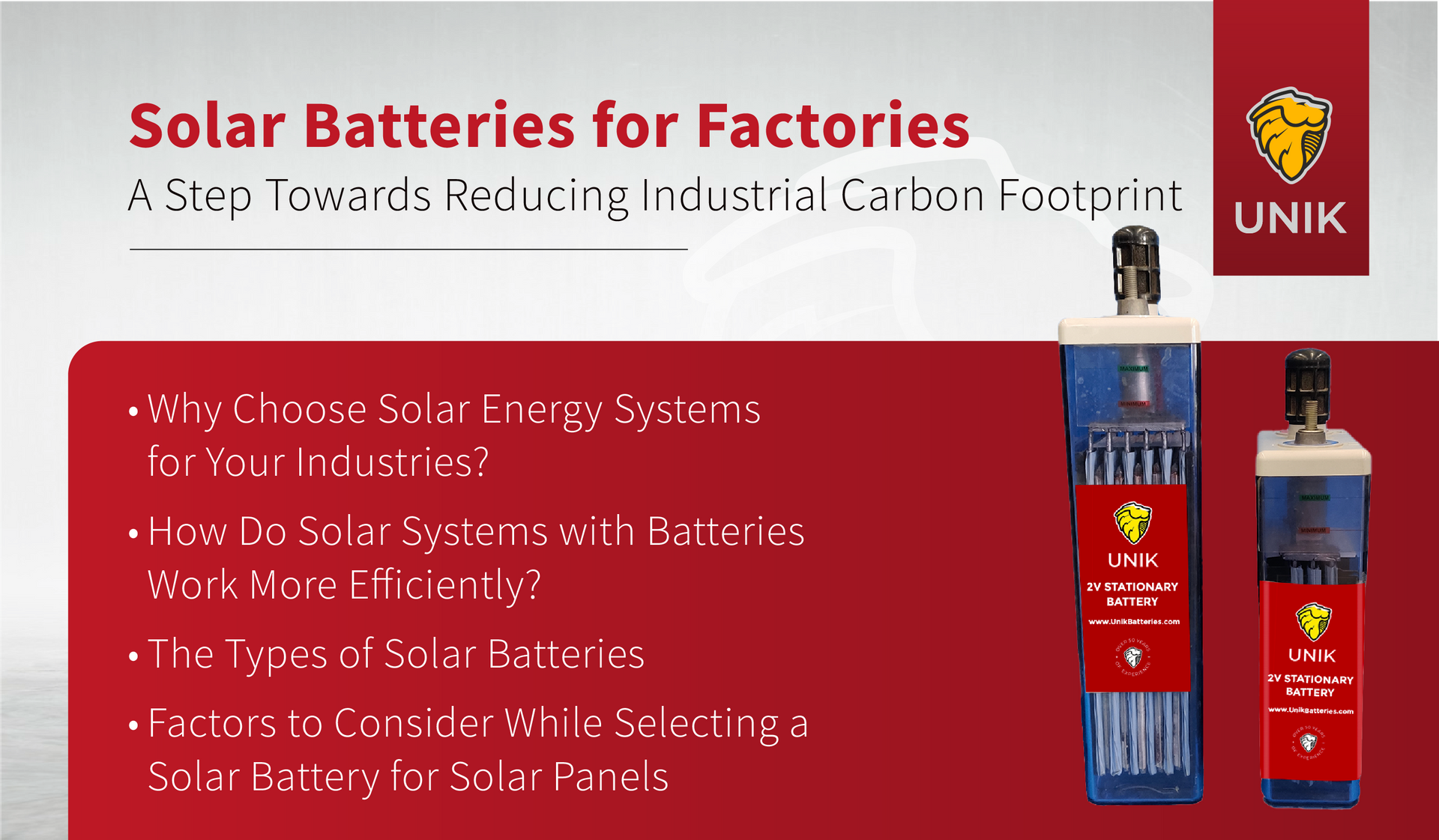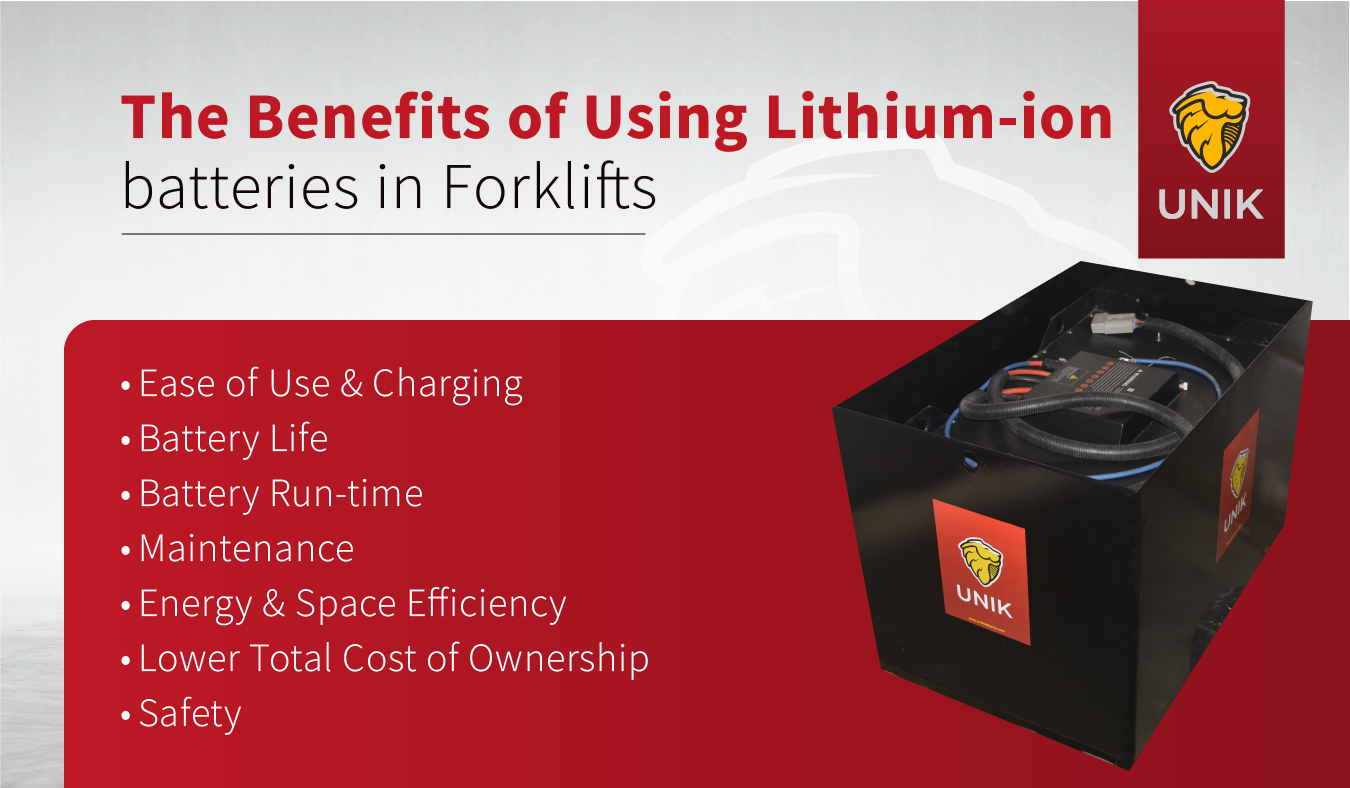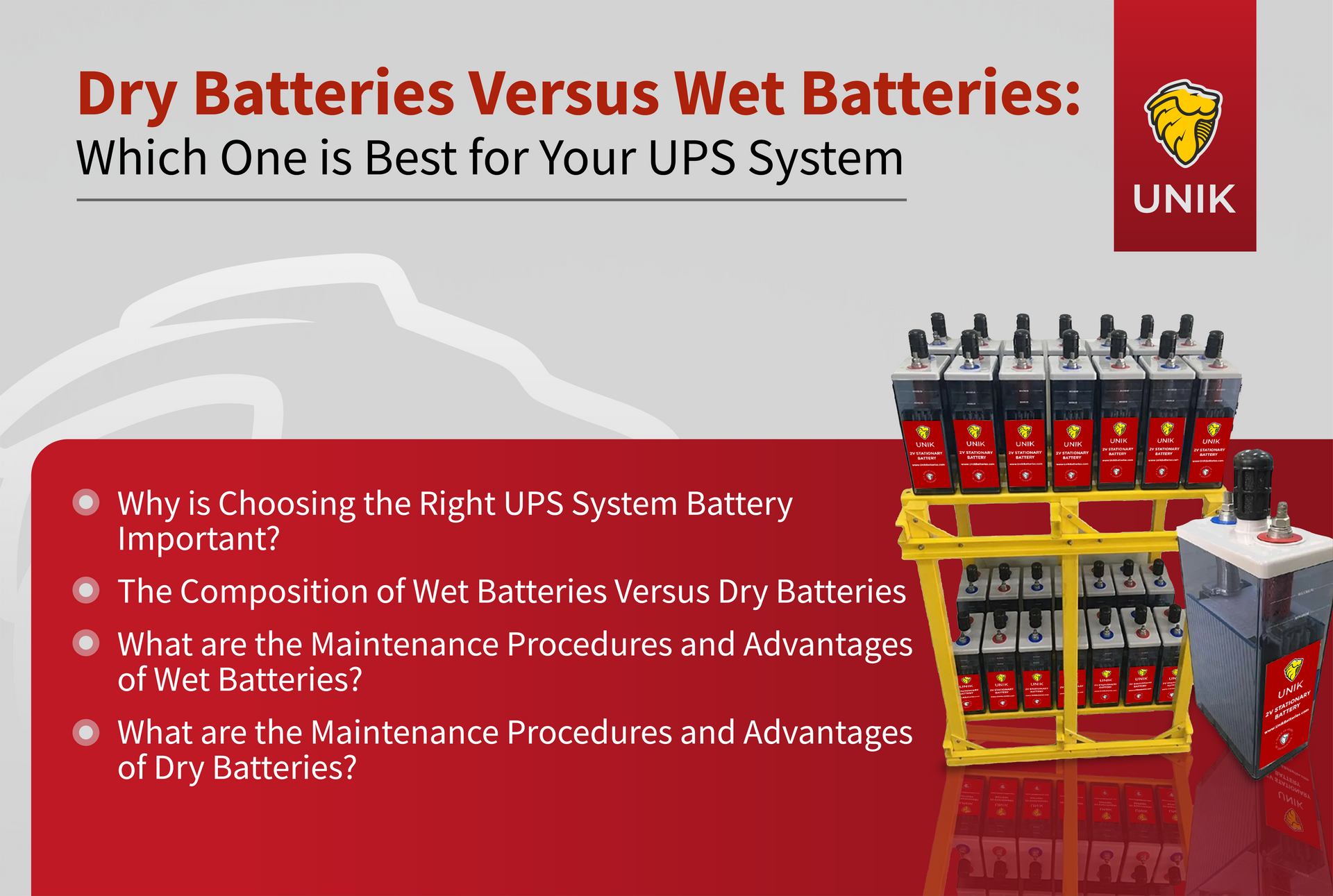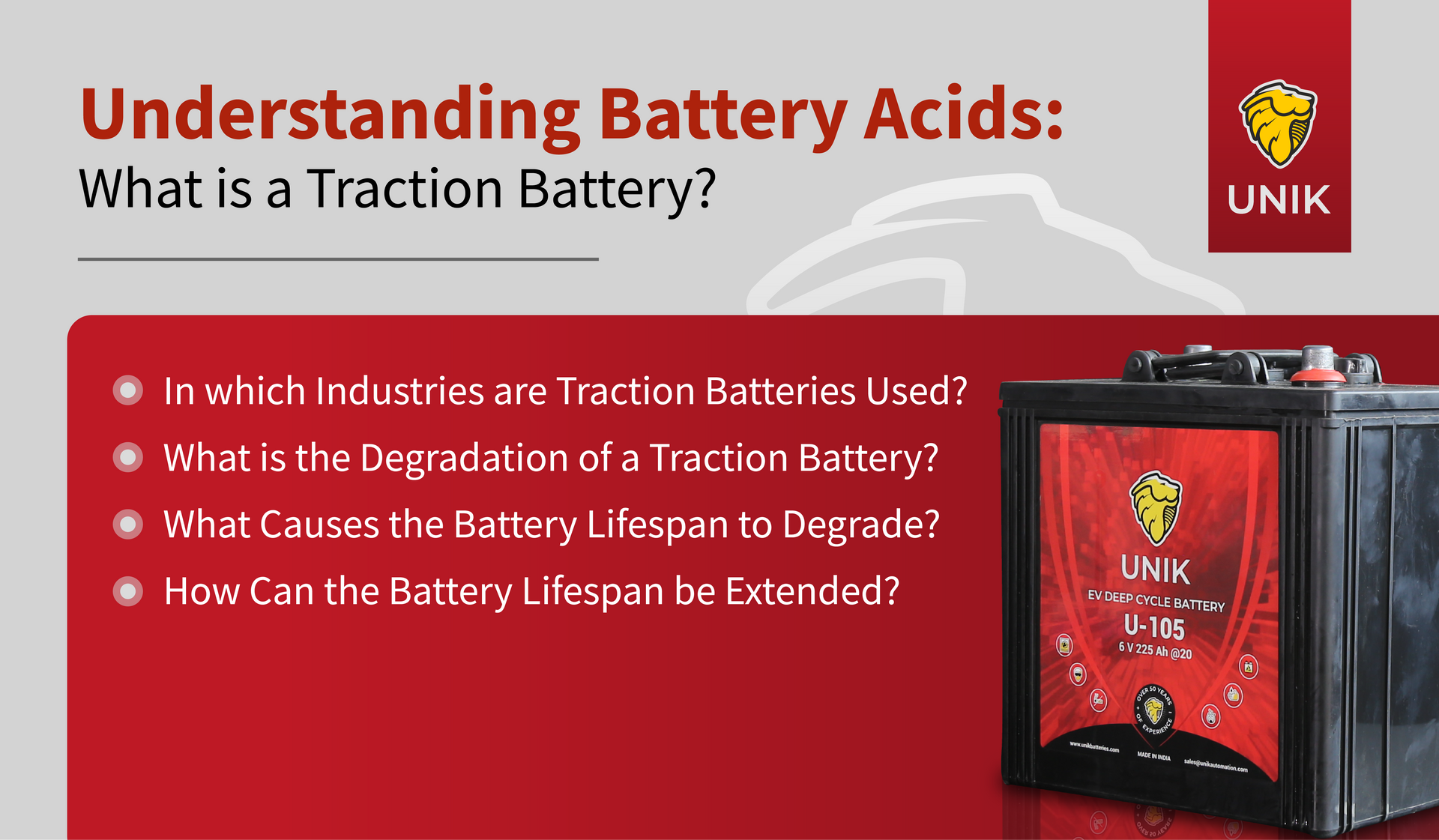KNOWLEDGE CENTRE

By Unik Techno
•
24 Nov, 2023
New ParagraphAt UNIK, we are often asked about the role of demineralised water in battery maintenance. This blog aims to serve as a guide for replenishing your battery’s water levels. Regularly replenishing your batteries with demineralised water is a crucial maintenance routine to ensure safety and maximise performance. What is Demineralized Water, and How is it Different from Regular Water? Demineralised water is clear of most mineral and salt ions. This is often achieved through ion exchange, reverse osmosis, or electrodialysis. Regular water, in contrast, contains a heavy load of impurities and dissolved minerals such as sodium, magnesium, and calcium which are detrimental to the health of batteries. Where is Demineralized Water Used in Batteries? Every lead acid battery, irrespective of its type, is immersed in an electrolyte solution comprising demineralised water and sulphuric acid. The amount of electrolyte is to be calculated and filled for optimum performance. While the battery is being operated, the demineralised water undergoes a chemical reaction and is broken down into hydrogen and oxygen. Why Does Demineralized Water in Batteries need to be Regularly Topped up? Over time and with consumption, the water level in the battery drops and no longer covers the electrode plates, reducing the battery’s conduction capacity. Therefore, regular top-ups with demineralised water are essential to ensure the longevity and effectiveness of the battery. While tap water or RO-purified water may seem like a viable alternative, they are not recommended for optimum battery performance and maintenance due to its impurities and minerals. With time, the dissolved minerals in non-demineralized water could clog the battery's electrodes by forming a layer of sediment. This eventually inhibits the battery from generating current. When Should You Top up the Demineralized Water in your Batteries? Overwatering and underwatering your battery can be equally harmful to your battery’s performance. Ideally, a battery should be topped up with demineralised water after charging. However, ensuring that the electrode plates are covered with adequate fluid before charging is also important. The frequency of demineralised water top-ups depends on the amount of usage. For instance, a sparingly used golf cart may need water top-ups monthly, while a forklift may need a weekly top-up. An inverter battery used as a back-up power source in urban areas could be topped up quarterly. Old batteries and hot weather warrant more frequent demineralised water level top-ups. Precautions to Follow while Topping up Demineralized Water in Your Batteries Before undertaking any maintenance work yourself, always check the warning labels to confirm if your battery can be opened for servicing. Although topping up demineralised water for batteries is a relatively safe maintenance procedure, always wear protective gear to prevent any accidents and injuries. Never add sulphuric acid to your batteries during top-ups. Batteries only consume water during normal usage; hence, sulphuric acid can compromise the safety of batteries and imbalances different cell specific gravities. Avoid overwatering your batteries as the electrolyte levels expand during the operations and cause the battery level to overflow, which damages the cell Incorporating demineralised water for battery maintenance, along with regular servicing and checkups, can significantly enhance the performance and longevity of your battery. Need more information on topping up demineralised water in batteries? Contact us for more details on maintenance procedures for UNIK batteries.

By Unik Techno
•
17 Oct, 2023
"Energy is the currency of the universe." - Albert Einstein The Art and Science of Battery Manufacturing Welcome to the fascinating world of battery manufacturing, where the fusion of art and the precision of science give rise to the powerhouses driving our modern world. At UNIK Battery Manufacturing Company, we are devoted to crafting these energy storage marvels with the utmost attention to detail and innovation. New Paragraph The Science of Battery Chemistry Battery manufacturing hinges on a profound understanding of chemistry, particularly electrochemistry. Batteries are essentially chemical devices that convert stored chemical energy into electrical energy. Here's a simplified look at how they work: Electrochemical Reactions: Inside a battery, two different materials called electrodes (usually one is positive and the other negative) interact with an electrolyte, which is a substance that allows ions to move between them. When you connect the battery to a device, chemical reactions occur at the electrodes. Electrons are released, creating an electric current. Cycling: Batteries can discharge and recharge because these chemical reactions are reversible. When you charge a battery, you're essentially reversing the chemical processes that occurred during discharge. Sustainability in Battery Science Sustainability plays a vital role in battery science. UNIK is committed to reducing the environmental impact of battery manufacturing. One way we do this is by designing batteries that can be charged using renewable energy sources, such as solar or wind power. This reduces greenhouse gas emissions and contributes to a cleaner planet. The Art of Customization Customization is where the artistry of battery manufacturing shines. It involves tailoring power solutions to meet specific needs. For example, our stationary batteries are designed to seamlessly integrate into various industries, providing uninterrupted power to critical systems. Modular Design for Flexibility Our modular stationary cells exemplify the art and science of adaptability. Assembled cells make a battery and modular construction ensures better heat dissipation during an exothermic reaction, hence reliably operating under all conditions. They allow businesses to assemble power solutions like a puzzle, ensuring efficiency, reliability, and flexibility. As you explore the intricate world of batteries, we invite you to discover our range of battery products at UNIK. Our passion for innovation, commitment to sustainable solutions, and deep understanding of battery chemistry drive us forward. Whether you need batteries for heavy machinery, electric vehicles, or critical systems, we offer solutions that combine the art and science of battery manufacturing. Let's embark on a journey towards a greener, electrifying world together! Your Partner in Power, UNIK Battery Manufacturing Company

By Unik Techno
•
17 Aug, 2023
Welcome, fellow energy enthusiasts, to a captivating journey into the future of power! Let's explore the incredible role of storage batteries in revolutionizing how we consume and conserve energy. Unleashing the Potential of Renewable Energy : Picture this: a world where renewable energy sources like solar and wind can shine their brightest, even when the sun hides behind clouds or the wind takes a brief nap. That's where our superhero, the stationary solar battery, swoops in! These power-packed energy storage systems save surplus energy generated during peak times, ensuring a constant supply during low production periods. Renewable energy can unleash its full potential with stationary solar batteries, bringing us closer to a greener and cleaner world. Empowering Electric Mobility : Rev your engines, folks, because we're heading towards the electrifying realm of transportation! Semi traction batteries are the driving force behind the electric vehicle revolution. Say goodbye to tailpipe emissions and hello to smooth, eco-friendly rides. With advancements in battery tech, electric vehicles now boast longer ranges and faster charging times. So, buckle up and get ready to join the electric mobility movement! Shaping Energy Grid Resilience : Let's momentarily look at the big picture—the energy grid. Stationary batteries are vital in maintaining stability and resilience in our power networks. They act as backups, storing excess energy during low-demand periods and releasing it when needed most. This ensures a balanced and reliable grid, minimizing the risk of blackouts and optimizing energy resources. It's like having a trusty sidekick, always there to keep the lights on! Repurposing and Recycling : The magic of traction batteries doesn't end when they retire from their electric vehicle duties. These clever batteries can find new purposes in stationary storage applications. It's a second lease on life! By repurposing retired batteries, we extend their lifespan and maximize resource usage. And when their time finally comes, we give them a superhero send-off through recycling, recovering valuable materials and reducing the need for new mining. It's a win-win for the environment. These remarkable energy storage systems are changing the game, unlocking the true potential of renewable energy, propelling us towards a greener future, and fortifying our energy grids. So, let's embrace the power of UNIK traction and stationary batteries, work towards a brighter future, and create a sustainable world for generations to come. Together, we can be the green change our planet needs!
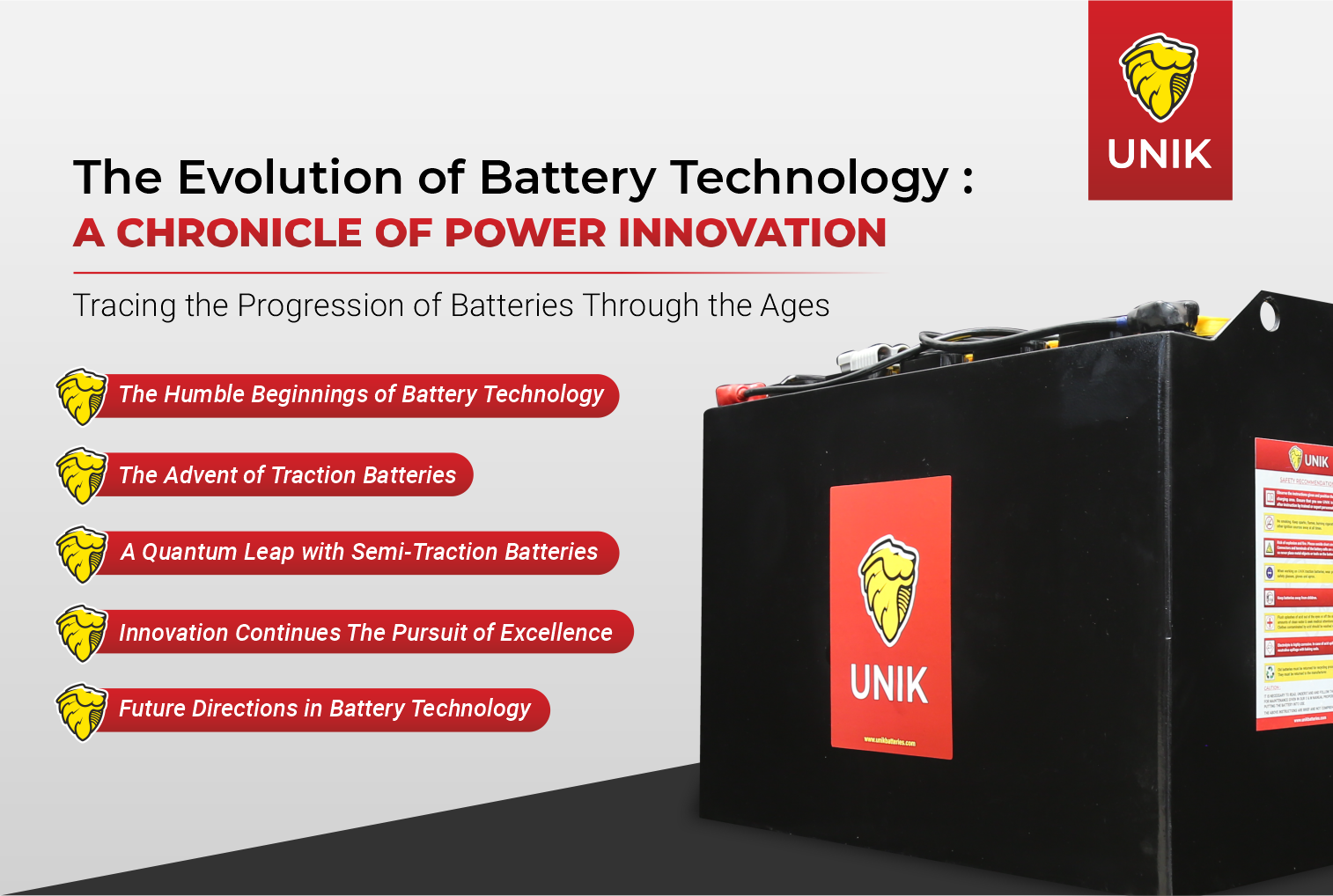
By Unik Techno
•
29 May, 2023
Tracing the Progression of Batteries Through the Ages And The Best Batteries Of UNIK. The Humble Beginnings of Battery Technology The tale of battery technology is a narrative of constant evolution and innovation, underpinned by humanity's continued quest to meet it's escalating energy demands. In its nascent stages, rudimentary energy storage devices were invented, laying the groundwork for what we now recognise as batteries. However, these initial models needed more efficiency, reliability, and longevity required by contemporary applications. The Advent of Traction Batteries The birth of traction batteries signalled a significant advancement in energy storage solutions. In contrast to their antecedents, these batteries offered higher energy density, extended lifespan, and superior reliability. The innovation of traction batteries also ushered in an era of electric vehicles and stationary machines, which relied heavily on these efficient energy providers. The battery market was dominated by diesel engine operated vehicles in the material handling (MHE) segment. Advent of pharmaceutical and food industries primarily had a requirement of pollution free, decontaminated and a dust free environment. Also, reduction in noise pollution requirements and lesser maintenance compared to diesel IC engines furthered the growth in population of traction batteries powered material handling equipment’s. A Quantum Leap with Semi-Traction Batteries The emergence of semi-traction batteries represented a quantum leap in technology. Leveraging deep cycle technology, these powerhouses offered improved discharge rates and an even greater lifespan, providing unprecedented efficiency to mobile and stationary applications. The semi-traction battery thus became an indispensable component in electric vehicles and various industrial machines, further fuelling the progress of battery technology. Innovation Continues The Pursuit of Excellence As technology advanced, so did the push for more efficient, reliable, and sustainable batteries. The industry began focusing on improving battery longevity, performance, and ecological sustainability, leading to the advent of greener, more efficient energy solutions. Future Directions in Battery Technology The current trajectory of battery technology points towards a future of continued innovation. With the growing global consciousness around sustainable energy, the demand for eco-friendly and efficient batteries is higher than ever. Battery technology of the future is expected to deliver more power, last longer, charge faster, and have a minimal environmental impact. Looking back at the journey of battery technology, we see a story of relentless progress and unwavering commitment to innovation. It is a testament to human ingenuity and the pursuit of better, more efficient energy solutions. As we turn the pages of this ongoing saga, UNIK aims to leave an indelible mark in the history of this exciting new technology. We promise to bring exciting innovations as batteries continue to shape the future.

By Unik Techno
•
12 Nov, 2020
The charging method usually used for first charge of a battery prior to commissioning is constant current charging. Constant current charging is a charge given to the battery at a pre determined or manufacturer recommended constant current for a certain duration as prescribed by the manufacturer with no regard to the voltage which rises. Usually the temperature is monitored to ensure that it does not rise high - sufficiently high enough to damage the battery internal components. Such a charge ensures that a defined Ah in relation to battery capacity is fed in to the battery. Once the battery has been fully charged the sp gr are equalized - wrt temperature as measured. A battery once used is recharged generally using a constant voltage charger. Constant voltage chargers have a current profile such that the current reduces as battery or cell voltage increases. Chargers used in large electricity sub stations or as UPS systems in telecom sector or as battery back up for inverters have a float mode. In float mode a trickle current is given to flooded electrolyte lead acid batteries - such that the voltage per cell is maintained between 2.16 volts to 2.20 volts. Such chargers are known as float boost chargers flooded electrolyte. AGM batteries cannot be charged with higher DC output voltage since charging at high currents can damage the battery - if float voltage is not set to supply a trickle current in the range between 2.25 volts 2.30 volts. Cycling batteries have a tougher duty to perform when in use. Chargers meant for cycling batteries have an equalising mode - in addition to boost charge facility.

By Unik Techno
•
12 Nov, 2020
A solar battery is a tubular positive plate battery unlike an automotive engine starting battery which has pasted positive plates. Both these batteries do however have negative pasted plates. But the negative pasted plates of tubular plate solar batteries are very thick compared to the negative pasted plates of automotive batteries. When you say general battery you must be referring to the car, bus or truck batteries which are classified as automotive batteries. Batteries with tubular positives and thick pasted negative plates are used in stationary and traction applications. Stationary batteries are used for 1. Large UPS systems in industries. 2. Telecom back up systems. 3. Emergency backup in power supply stations. 4. Reliable power supply in Nuclear Power Installations. 5. UPS systems in home inverters, clinics and shops. 6. Railway signaling and air conditioning systems. 7. Storage of solar energy to use in remote locations as the only source of power or to augment power as a renewable energy source. Stationary batteries used for solar power are different from stationary batteries used in UPS or other applications though both are made using tubular positive plates and thick pasted negative plates. A battery made for solar application is rated at 120 hr rate for a discharge at very low current over a long duration. This is necessary since these batteries must have a 5 day autonomy at the very least. That means they must be able to deliver power for 5 days which is 120 hours even without getting charged. Such situations arise when there is heavy rainfall and sun is not available to provide charge to the battery through the collecting solar panels. In case a 2 volt stationary battery cell made for solar application is rated at 500 Ah at the 10 hr rate and can deliver 50 amperes for 10 hrs it means that battery can deliver 6.25 amperes for 120 hours. This battery is therefore rated as 750 Ah at the 120 hr rate. Solar batteries are designed and manufactured specially at the factory - with characteristics different from UPS batteries. They are manufactured so as to 1. have a low topping up frequency. 2. accept charge efficiently so that battery gets charged in the short duration when Sun is available. 3. be capable of discharge over a long duration. 4. be able to withstand operation in high temperature outdoor storage areas. 5. have low maintenance characteristics. 6. have a low internal resistance. A solar tubular positive plate lead acid battery is a battery connected to a solar photovoltaic system with an inverter and charging system as an interface between the solar photovoltaic cells and battery. The solar photovoltaic cells charge the storage battery using power from the sun to do so. The photovoltaic cells are connected to the charger. Once the battery is fully charged the energy from the battery is used as per load demand. An inverter converts the DC power of battery to AC power suitable for the load.

CORPORATE OFFICE:
UNIK Batteries Pvt. Ltd.
J-52/4, Indrayaninagar Road, M.I.D.C, Bhosari, Pune, Maharashtra
411 026, India.
CONTACT US:
International enquiries:
Akshay Kailat:
Phone: +44 7756 077320
Email: akshay@unikautomation.com
Local & general enquiries:
Shubhangi Daundkar:
Phone: +91 98504 13331
Email:
marketing@unikbatteries.com
© 2023 Unik Batteries Pvt. Ltd. All Rights Reserved
Digital Presence Managed By: Knowledge Units


